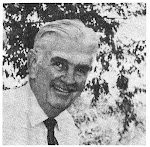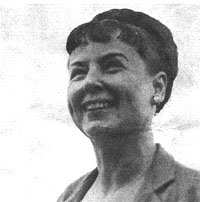Monday, April 23, 2012
Behind Every Successful Man…
While there’s an increasing volume of information concerning Holling Clancy Holling, there is much less biographical data on Lucille Webster, his wife. Yet, Lucille was an artist and professional in every way — and some of Holling’s success must be accorded to her.
Lucille Webster was born on Dec. 8, 1900, in Valparaiso, Ind. In Chicago, she designed theatrical scenery and costumes, and drew for fashion publications. A mutual friend introduced Holling to Lucille and her older sister who shared an art studio in the city. She remembers going out with Holling on a nice first date at a Chinese restaurant, but it wasn’t until she attended the Art Institute the following year that Holling was re-introduced to her during one of the open houses the girls had. That night, Holling and Lucille planned a world tour and began seeing each other steadily.
While Holling grew up in rural Michigan in a large family of devoted Methodists, Lucille was in some ways his opposite. She was a city girl whose father and a baby brother died early. There was no apparent religious observance. She had one sister, also an artist but reportedly unstable.
Still, they were married in 1925. The following year, the couple went on the first University World Cruise, where she designed for the drama department.
She and Holling became a couple in every sense of the word, as together they produced national advertising art and foreign travel brochures. Lucille illustrated a number of books for other authors, including Kimo, the Whistling Boy by Alice Cooper Bailey (1928); Songs from around a Toadstool Table by Rowena Bastin Bennett (1930); and the cover of Oriental Stories, a pulp magazine (1931). Together with Holling, she also illustrated textbooks. Among the Hollings' joint publications are Choo-Me-Shoo (1928), The Book of Indians (1935) and The Book of Cowboys (1936).
Joan Hoffman notes that Lucille made a specific contributions to two Houghton Mifflin books. “In Pagoo, all those microscopic drawings are hers and her name appears along with Holling's as illustrator on the title page. In the acknowledgment for Tree in the Trail, Holling gives Lucille credit for helping to complete the illustrations, research on trail data and for designing the colored map at the end.” Holling confessed, Joan says, “that Lucille draws women and children better than I do.”
While Holling had come from an extended family, Lucille seemed to have less family involvement. This may have been a reason Lucille wanted to settle down and have a home before Holling did. Moving to California, she worked with her husband on books. In 1951, she designed and oversaw the construction of their studio residence — their first home — in Pasadena. She died on 31 December 1989. Sadly, the Hollings had no children.
Subscribe to:
Post Comments (Atom)












No comments:
Post a Comment